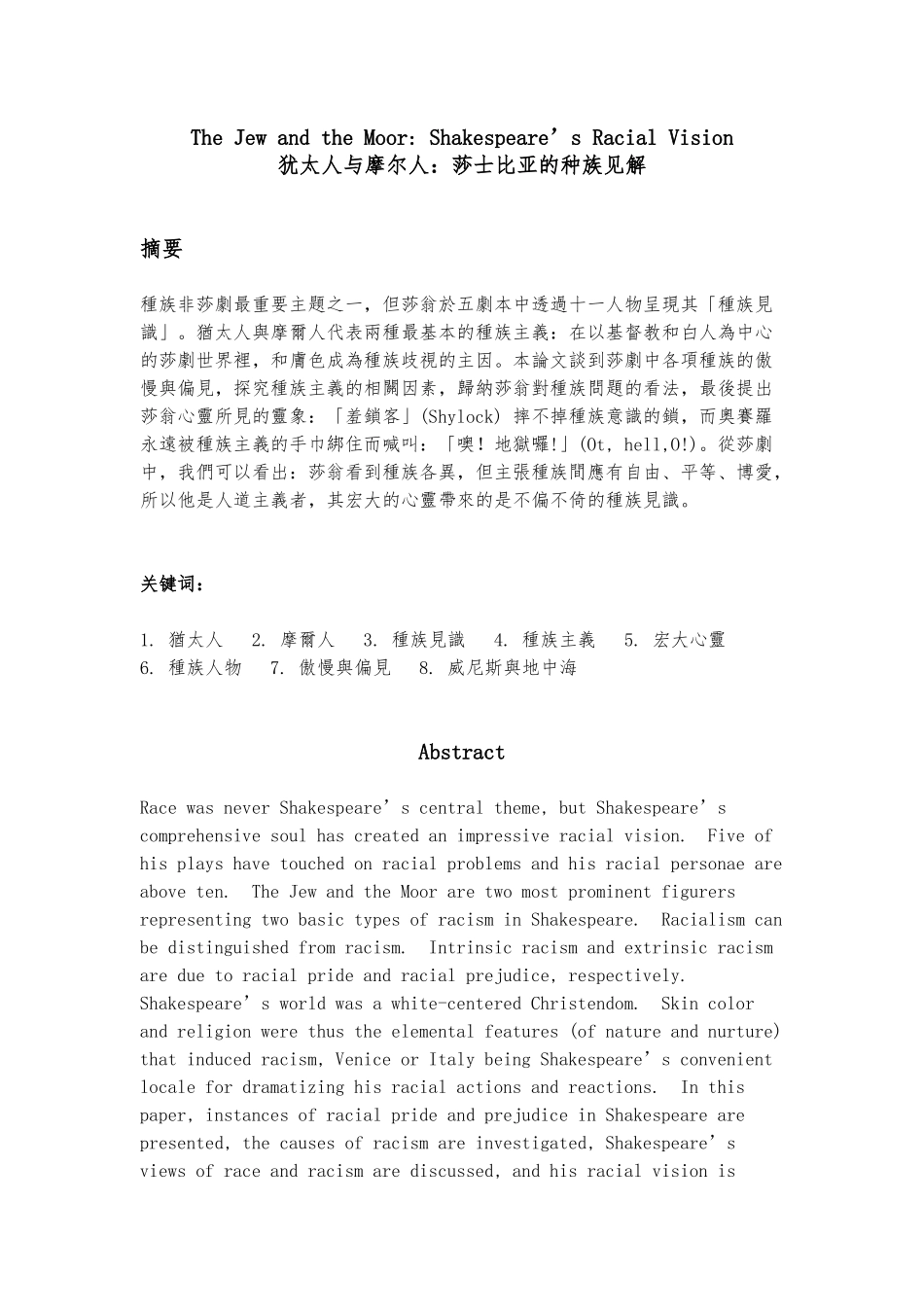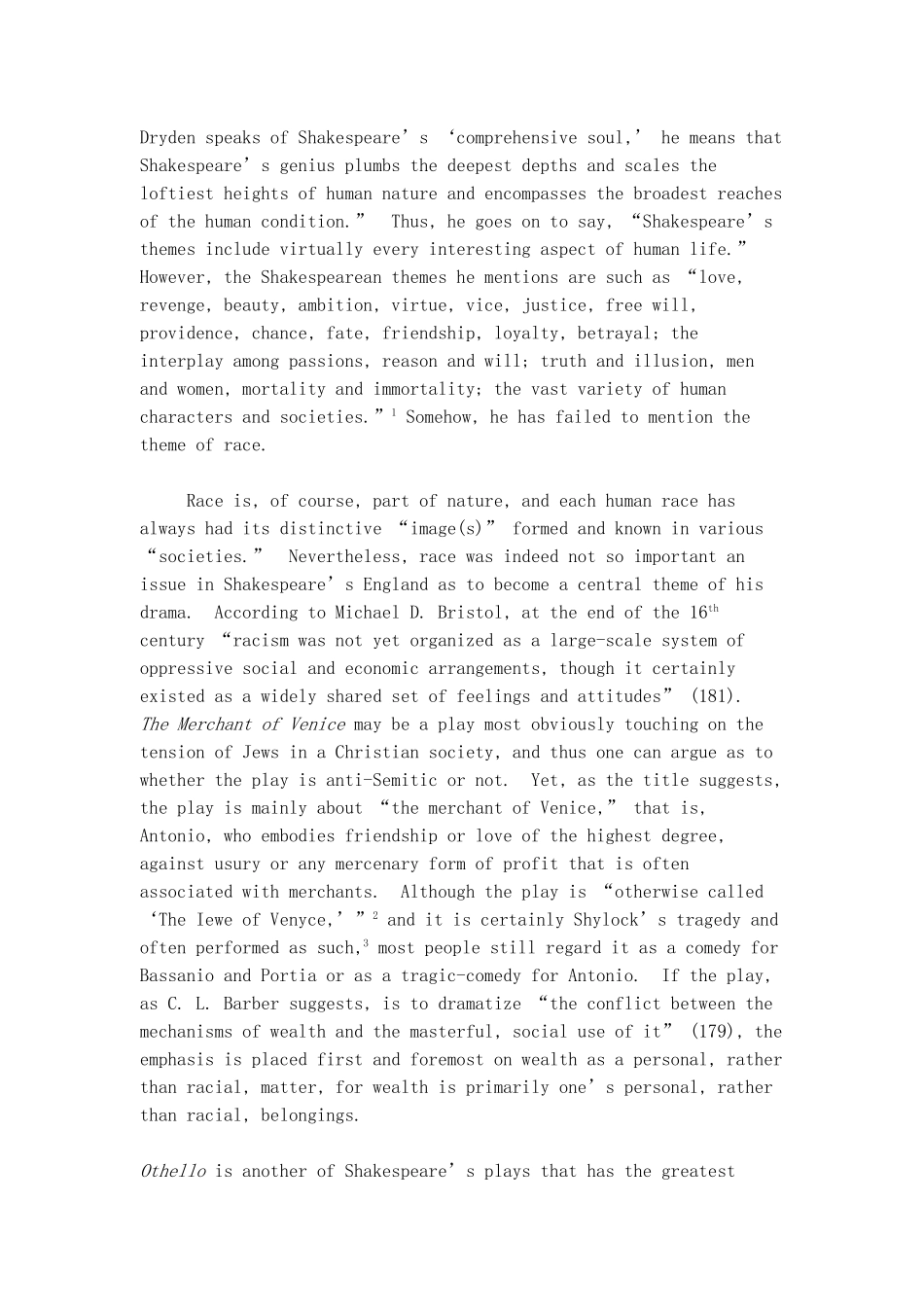The Jew and the Moor: Shakespeare’s Racial Vision犹太人与摩尔人:莎士比亚的种族见解摘要種族非莎劇最重要主題之一,但莎翁於五劇本中透過十一人物呈現其「種族見識」。猶太人與摩爾人代表兩種最基本的種族主義:在以基督教和白人為中心的莎劇世界裡,和膚色成為種族歧視的主因。本論文談到莎劇中各項種族的傲慢與偏見,探究種族主義的相關因素,歸納莎翁對種族問題的看法,最後提出莎翁心靈所見的靈象:「羞鎖客」(Shylock) 摔不掉種族意識的鎖,而奧賽羅永遠被種族主義的手巾綁住而喊叫:「噢!地獄囉!」(Ot, hell,O!)。從莎劇中,我們可以看出:莎翁看到種族各異,但主張種族間應有自由、平等、博愛,所以他是人道主義者,其宏大的心靈帶來的是不偏不倚的種族見識。关键词:1. 猶太人 2. 摩爾人 3. 種族見識 4. 種族主義 5. 宏大心靈 6. 種族人物 7. 傲慢與偏見 8. 威尼斯與地中海AbstractRace was never Shakespeare’s central theme, but Shakespeare’s comprehensive soul has created an impressive racial vision. Five of his plays have touched on racial problems and his racial personae are above ten. The Jew and the Moor are two most prominent figurers representing two basic types of racism in Shakespeare. Racialism can be distinguished from racism. Intrinsic racism and extrinsic racism are due to racial pride and racial prejudice, respectively. Shakespeare’s world was a white-centered Christendom. Skin color and religion were thus the elemental features (of nature and nurture) that induced racism, Venice or Italy being Shakespeare’s convenient locale for dramatizing his racial actions and reactions. In this paper, instances of racial pride and prejudice in Shakespeare are presented, the causes of racism are investigated, Shakespeare’s views of race and racism are discussed, and his racial vision is delineated. The conclusion is: Shakespeare recognizes the existence of racial differences but he is not a racist. Shakespeare is in fact an imp...


